There are plenty of fossils to be found around the coast of Whitby. Affectionately known as the Dinosaur Coast, you can find a variety of Whitby fossils around the surrounding coastline.
Away from the bustling of the town centre, there are several free activities which you can enjoy during your visit to the Yorkshire Coast. One of our favourites is searching for Whitby fossils. The beaches to the north and south of Whitby yield prehistoric finds of many varieties. Ammonites, reptile remains and shells are easy to stumble upon whilst out walking. And, of course, Whitby is famous for Jet which is similarly easy to find if you know where to look. There are several places along the Whitby coast where you can find Whitby fossils – it’s simply a case of local knowledge and a little bit of luck.
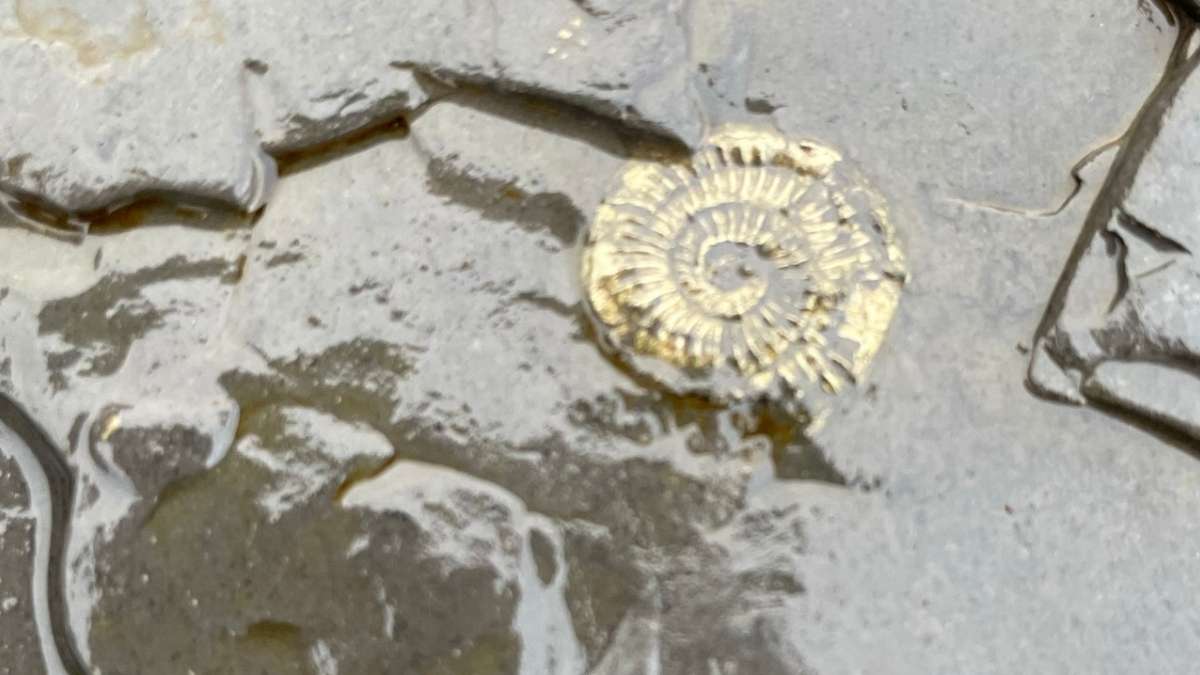

Download your FREE Whitby Mini-Guide
"Get the best from your stay in Whitby." - Everything you need to know about Whitby into a free mini-guide!
What types of Fossils can be found in Whitby?
From the mouth of the River Tees to Flamborough Head the affectionately named Dinosaur Coast is a spectacular landscape. Several different fossils can be found along this stretch of coastline. Ammonites can be found they are now extinct marine animals. Their appearance is shell-like and they may be as much as 140 million years old. Certainly, it is thought they became extinct at the same time as the dinosaurs, 65 million years ago. Belemnites can also be found here, they were squid-like in appearance and are dated 135 million years ago. They get the nickname, ‘’bullet stone’’ because of their appearance. Dinosaur/Reptile remains are most likely to be found just above the level of the beach in the cliff faces. Jet is compressed wood from the Araucaria or Monkey Puzzle tree. This organic gemstone is thought to be about 180 million years old and is commonly used to make jewellery.
Where can you find fossils in and around Whitby?
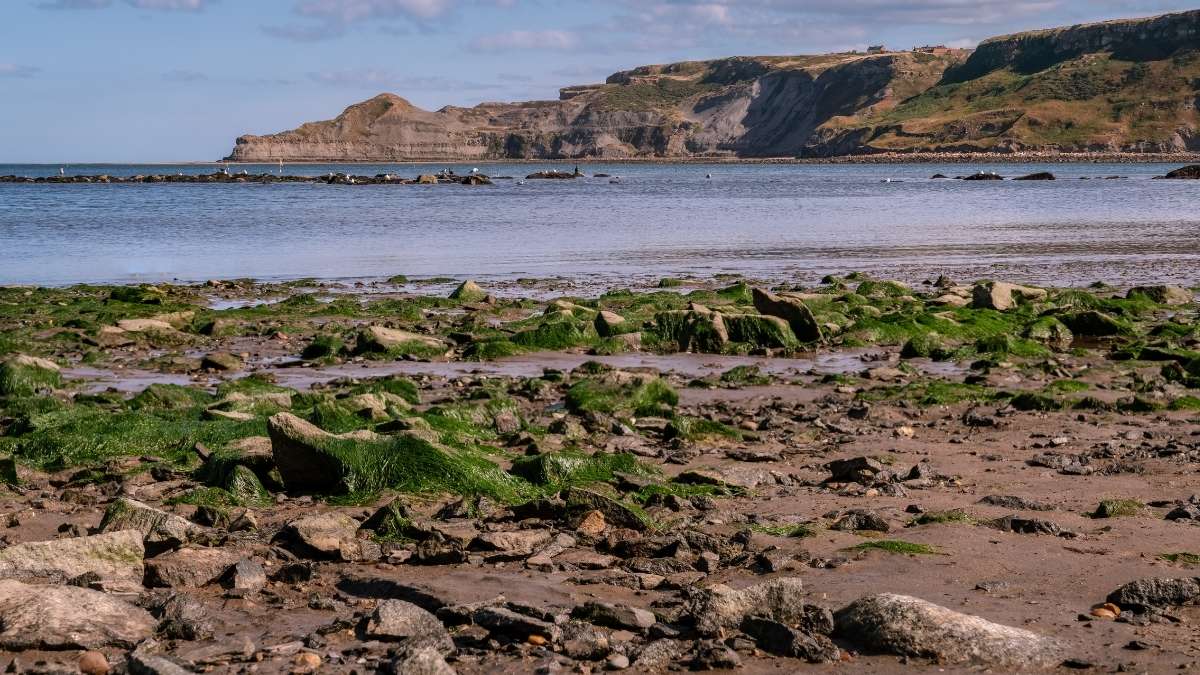
Whitby is surrounded by beaches, to the north and south. You will enjoy each of them, and there is a chance that you can find fossils during your time there. One of the region’s nicknames is the Dinosaur Coast and palaeontologists and those interested in fossils in general head here from far and wide.
- Staithes was Captain Cook’s home but it is also the northern end of the Dinosaur Coast. There are organised tours centring on Staithes although you are more than welcome to search independently. Kids will be impressed if they find fools gold which comes in small pieces; iron pyrite.
- Port Mulgrave is a little to the south and you must take care if you head down to the beach in search of fossils so it is not a place for kids. There are ammonites and reptile remains regularly found by those who do get down to the beach.
- Runswick Bay is the next place heading south to Whitby, a beach of sand and rock with plenty of rockpools to explore. Ammonites are regularly found here when you search among the tidal debris and the rocks.
- Kettleness Bay is to the west of Runswick Bay, a fairly remote cove whose appeal is largely fossils. It is not suitable for children because access is difficult. Ammonites and other fossils are regularly found on the foreshore and on the shale cliff face. Whitby Jet is also found here.
- Sandsend Ness is another favourite among fossil collectors. The shale banks are filled with belemnites close to the surface. Sandsend Beach itself to the south is family-friendly but not so productive for fossils.
- Upgang Whitby Beach, Whitby Sands and Tate Hill Beach are the closest to the town but known more for families to enjoy the sands rather than for fossils.
- Saltwick Bay is south of Whitby and at times access can be fairly difficult due to the erosion of the steps on the path. It is not a place for swimmers but fossil hunters may well find both ammonites and belemnites. Whitby Jet is also found amongst the rocks and shale.
Video – Fossil hunting at Saltwick Bay
How to Hunt for Fossils Safely
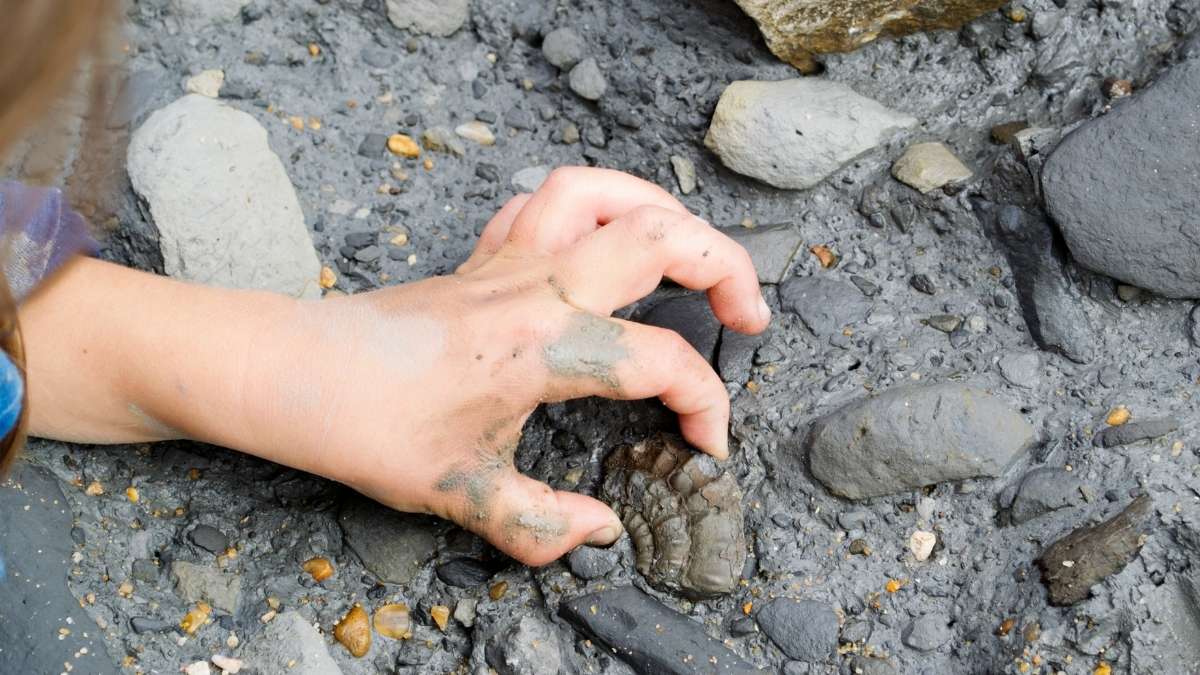
Fossil hunting is so much fun and an exciting way to learn about the history of life on earth. It’s important however to follow some guidelines so that we do not damage our natural heritage or disturb wildlife.
- Look for fossils in already loose beach material.
- Collect a small number of fossils.
- Record your collections. (Time, place, what they are.)
- Try not to disturb wildlife or habitats.
- Check the local tide times.
- Stay clear of any steep cliffs.
- Wear appropriate clothing and footwear.
Important safety notice!
Be wary and careful collecting at all locations, knowledge of tide times is essential. It is very easy to get cut off at Whitby, the sea always hits the cliff. You should ensure you return before the tide turns. Also be aware of sticky areas at Whitby, on the slippages as it is easy to get stuck especially after rain.
Whitby Jet

For at least four thousand years people have treasured Jet, a unique black stone. The Jet discovered at Whitby is of the Jurassic age, approximately 182 million years in the making. Jet is a fossilised Araucaria tree and is the result of millions of years of compression of decomposed wood. A precursor to coal, it is found in the debris from fallen cliffs and across the moors. Whitby Jet is of the finest in the world and has a reputation as the ‘gold standard’ in Jet. Popular in Roman Britain for jewellery such as rings, hairpins, beads, bracelets, bangles, necklaces, and pendants thought to be produced in York. Beachcombing was the popular method of discovery of Jet during Roman times, just as it is today. You can find examples of Jet on display at The Museum of Whitby Jet.
Dinosaurs in Whitby

It’s true! dinosaurs lived on the Yorkshire Coast in the middle of the Jurassic period. Dinosaur footprints were first discovered on the Yorkshire coast in Saltwick in 1895. During the Jurassic period, this coastal area was low-lying and warm. Over the millions of years that dinosaurs roamed this area the sea levels would rise and fall. Dinosaurs would leave their footprints in the silt and mud on the beaches and deltas. These prints act almost like casts as harder material would have been washed in them as the silt hardens. This infilling is resistant to erosion preserving the print. Some of these prints have been preserved for over 160 million years!
Sauropod discovery
This dinosaur backbone discovery dates back about 176m years to the Middle Jurassic period and was found on a beach at Whitby falling from a cliff face. Sauropods include some of the largest plant-eating dinosaurs that have existed and were a successful group for nearly 150m years. They were similar to a Brontosaurus; with their distinctive long necks and tails, very small heads, large body, and walked on all fours. Some species, such as the Argentinosaurus, grew up to 115ft (35 metres) long and possibly weighed as much as 80 tonnes. Professor Phil Manning and his team from the University of Manchester used x-ray tomography to study the fossil bone, which is now held in the collections at the Yorkshire Museum in York. Until more bones are discovered the team have nicknamed Britain’s oldest sauropod Alan, after the finder of this prehistoric giant, Alan Gurr.
Teleosaurus Chapmani discovery

Teleosaurus Chapmani was discovered by Captain William Chapman and described by John Wooler in the Philosophical Transactions of the Royal Society of 1758. The specimen, later named Teleosaurus chapmani Konig, was given to the British Museum in 1781. This prehistoric crocodile is thought to be one of the oldest discoveries of its kind in the region.
These finds at Whitby sparked a great deal of interest in the geologic community and with entrepreneurial quarrymen who soon realised that there was money to be made in fossil hunting! Locals began to become upset and concerned that these fossils were being found locally however they were being lost to the rest of the world. To protect these rare and historic curiosities the Reverend George Young helped to establish the Whitby Literary and Philosophical Society to house these precious items. More commonly known as Whitby Museum, the display of local fossil finds is among the best in the world.
Fossils at Whitby Museum
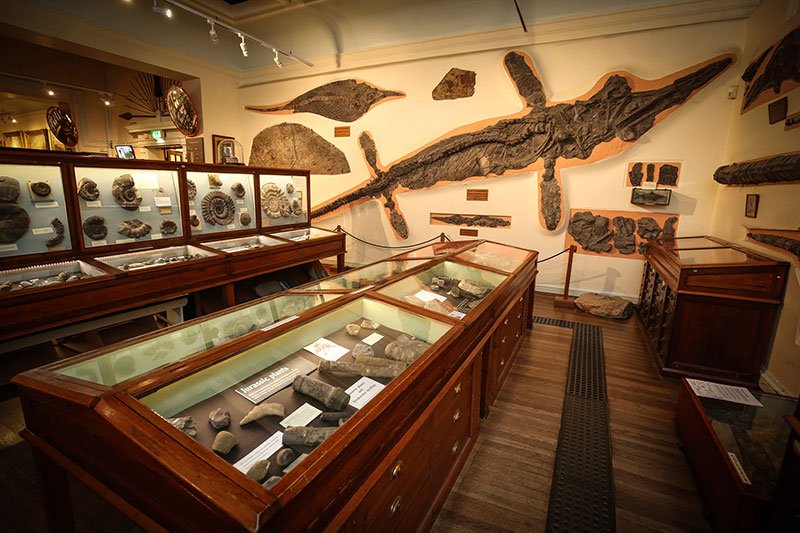
One of the major early fossil attractions at Whitby Museum was another skeleton of the fossil crocodile Teleosaurus Chapmani it was purchased in 1824 for £7. Brown Marshall, a carpenter from Whitby spotted the snout sticking out of the cliff and excavated the skull and the bulk of the skeleton by hanging from the top of the cliff on ropes. Part of the tail was taken out 3 years later.
The collection today contains a wide range of fossil materials. It includes vertebrates, invertebrates, plants, and trace fossils. The ammonites, nautiloids, belemnites, marine reptiles, fish, and plants are of particular interest and international scientific importance with over 200 ‘primary’ type specimens which include many holotypes a single specimen recognised worldwide as showing the main character of a particular species. The main specimens of scientific importance are to be found amongst the ammonites, nautiloids, belemnites, plants, and marine reptiles. Most of the specimens are from Lower and Middle Jurassic strata.
There is also a growing collection of dinosaur footprints varying from some a few centimetres in length up to one 40 centimetres long belonging to a herbivore. In addition, there is also a small but good representative collection of local rocks, building stones, erratics, and minerals. In recent years, a number of large and spectacular evaporate mineral specimens from the Zechstein Sea as found in Boulby Mine have been collected and displayed by Mr Peter Thornton.
A Whitby fossil hunting legend
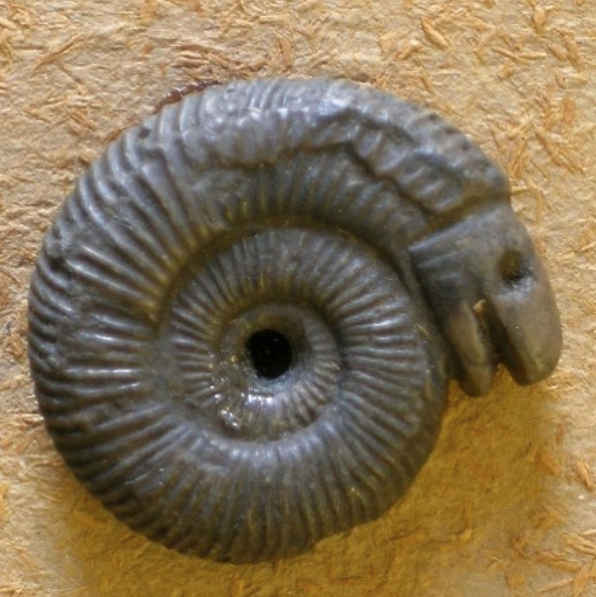
Whitby’s fossil hunting legacy involves a poem about St Hilda. Sir Walter Scott penned a verse in the poem Marmion, A Tale of Flodden Field:
“How of a thousand snakes, each one Was changed into a coil of stone, When holy Hilda prayed.”
It is said in the ancient legend that St Hilda, in the search to find land for her monastery at Whitby, found a field that was infested with snakes. The legend goes that when she prayed the snakes coiled up into petrified stone and rolled off the cliff to the beach below. It is these ‘coiled snakes’ that are so sought after by fossil hunters today.
What to wear and tools to take with you when fossil hunting in Whitby

A sturdy pair of walking boots or even better, Wellington boots are recommended for Whitby fossil-finding expeditions.
A reliable waterproof and a warm pair of gloves are highly advised. The weather changes quickly on the coast and there’s nothing worse than catching a cold on your fossil hunting adventure.
For more advanced enthusiasts we suggest taking a rucksack or backpack of some kind. This will help to store and take away all the amazing things that you find.
A small hammer may be helpful on the cliffs. Usually, a quick tap on a lump of rock reveals an imprint of a shell or belemnite. Something long and pointy like a screwdriver or a small pry bar is handy when rummaging around for fossils. A pry bar means that you can prize the rocks apart and chip away at stuck objects.
We never leave home on a Whitby fossil ferreting mission without a flask of hot sweet tea. You can thank us later when you’ve returned home with your stash of shells and rocks.
We find that a notebook and pencil are useful when recording the fossil finds, as is a camera for capturing the original and recording the process.
Buy a ready-made fossil hunting kit
If you’re serious about finding Whitby fossils you need to be prepared. There are several tool kits available on Amazon which are great to use to find fossils along the North Yorkshire Coastline.
Unique Handmade Ammonite Whitby Soaps

Whitby fossils have become the inspiration for a local creative. Ruth Denison of Mount House has turned to the beauty of the ammonites found on the beach as inspiration for her range of artisan soaps. Handmade Whitby ammonite soaps take the design of several large fossil finds and turn them into delightfully stylish soaps for the home.
Learn more about these handmade Whitby ammonite soaps here, you can buy your very own ammonite soap in our online shop.


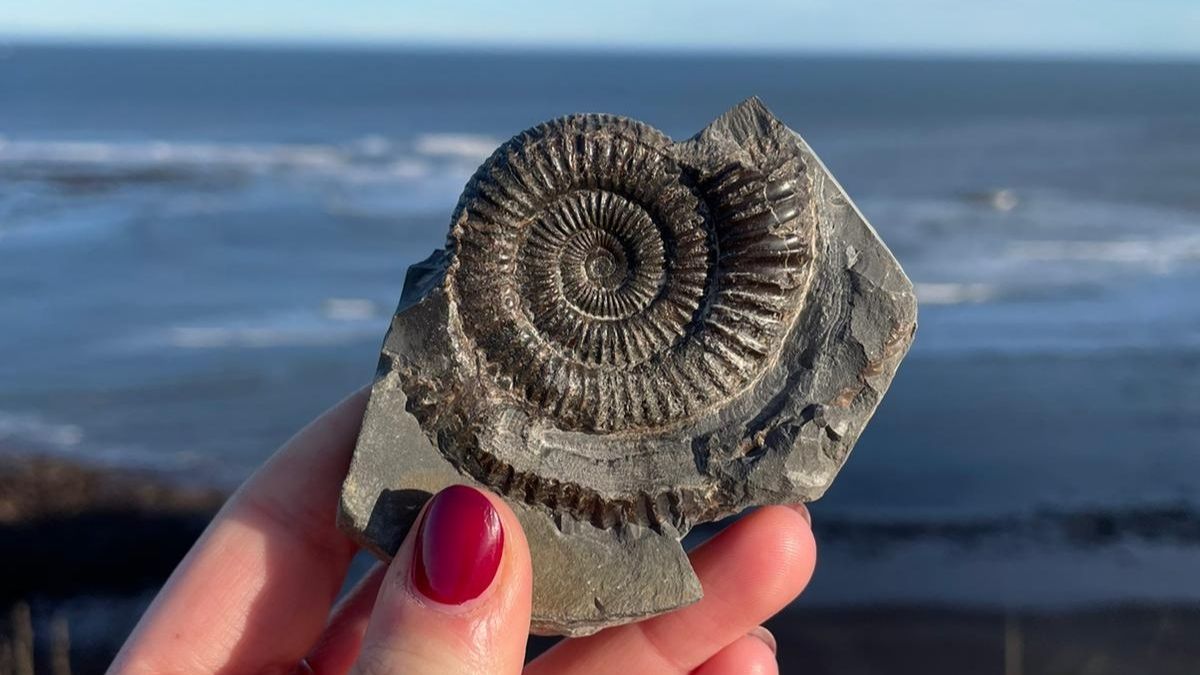

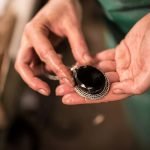

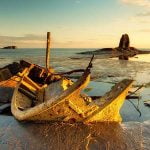





It is with a heavy heart that I write to tell you that there is a shop in Berwick-upon-Tweed called Vintage upon Tweed, where Whitby ammonite pebbles are for sale. I believe it is wrong (possibly illegal) to take these pebbles from Whitby beach and I would like to know that the gentleman who is trading them is stopped from doing this.
Hello David,
I’m not affiliated with this website or its authors in any way, however I was just reading this article when I spotted your comment at the bottom.
Don’t worry about the shop selling ammonite pebbles!
I’m know the areas around Whitby fairly well and I’d like to reassure you that ammonite pebbles are commonly traded in Whitby itself, as well as elsewhere. People have been collecting ammonite fossils, jet, and other materials from the surrounding beaches and also regularly trading them in the Whitby area for hundreds of years. There are many local shops throughout the town selling ammonites to tourists, and some shops even specialize in selling rarer fossils to collectors. The speed of coastal erosion of the shales and mudstones containing these fossils is incredibly fast and so the pebbles are constantly replenished and the fossils do not run out!
It does take a keen eye and a lot of patience to find fossils amongst the scattered debris below the cliffs. Often the ones for sale in shops are surplus commonly found fossils which have been found by collectors while looking for rarer ammonite species for their collections. As found they are virtually worthless and often quite a lot of labour also goes into preparing them for display before they can be sold. The people trading these normally don’t make huge sums of money out of it! The price of the fossils being sold in shops generally reflects the the amount of labour that has been put into sourcing the fossils and preparing the final product as well as the costs of keeping them on display for people to buy them.
That said, there are some things which it is generally not okay to do when collecting, and which could get you into trouble. I’d like to point some of these out for the benefit of anybody else reading:
Hammering at the cliff faces as this article suggests is not only very foolhardly as it can be incredibly dangerous, but it also risks damaging important scientific discoveries if not carried out with the right level of care and unless detailed records are kept. While it may be tolerated in some places, this kind of activity is not generally suitable for the public to carry out and is best left to experts and people who know what they are doing! Many fossils are quite common, and these are best picked up off the beach anyway as it is both safer and easier. Records of where you found these should still be kept, particularly if they are unusual. However, if you do happen to find an important fossil exposed in the cliff face and you are not an expert, rather than trying to extract it yourself, you should take a photograph and report it to a museum as soon as possible.
Also, care should always be taken to avoid damaging or disturbing wildlife, whether you are fossil collecting or simply out for a walk with your dog!
If you adhere to these guidelines, and other relevant fossil collecting guidelines which you can find elsewhere online or in books and leaflets, then you won’t get into any trouble in the Whitby area. If you don’t, then you *could* be damaging the scientific value of the exposures. Even if you don’t bring down the cliff on top of you by hammering at it, you are still at risk of litigation against you, particularly if you are found to have damaged the scientific interest, as most of the exposures are protected under SSSI laws which are designed to prevent reckless or large scale damage to these areas. Wildlife is also protected in many areas by SSSI status, and often has other legal protections as well.
Also, please be aware that every area is different, and my comments are made specifically about the areas surrounding Whitby, where fossil collecting activities are generally allowed and even some contraversial activities are widely tolerated. Your local area may not be the same, and you should research any area before collecting from it, even if it falls under similar legislation. Often, there may be different local guidelines that should be followed or special permission that should be obtained first, and collecting is not allowed at all in some areas which are especially sensitive, for better or for worse!
Disclaimer: Please be aware that I am not a lawyer. My comments above do not constitute legal advice and shall not be used as such.
-Tom
Dear David,
Many thanks for naming the shop in Berwick. I’ll pop along and take a look as I’d like to buy some nice ones and I’m certainly not going to drive all the way to Whitby for some ancient pebbles.
I’ve heard of a guy who collects driftwood at beaches, makes models from it, then sells his models from his shop at an inland location which I won’t mention. Let’s start a campaign to ensure there’s a crackdown on people moving goods from their place of origin to where the market is. While we’re at it let’s make sure that those tourists who buy the fossils in Whitby shops don’t take them home with them. Surely that should be illegal.
Where will it all end? Soon they’ll be taking grapes from Australian vines and shipping it to the Whitby co-op for us to enjoy. That wine clearly deserves to be sold in Sydney, or better still, on the actual vineyard. Whatever next – they’ll be pulling precious mineral wealth out of the Saudi desert, processing it and offering it to people at UK petrol stations!
Atrocious!
Steve
P.S. I don’t suppose you own a fossil shop in Whitby and therefore want to push for a monopoly? I can’t see why anyone else would object.
Brilliant, made me chuckle, but also valid, there are always folk who will have someone or something to whine about.